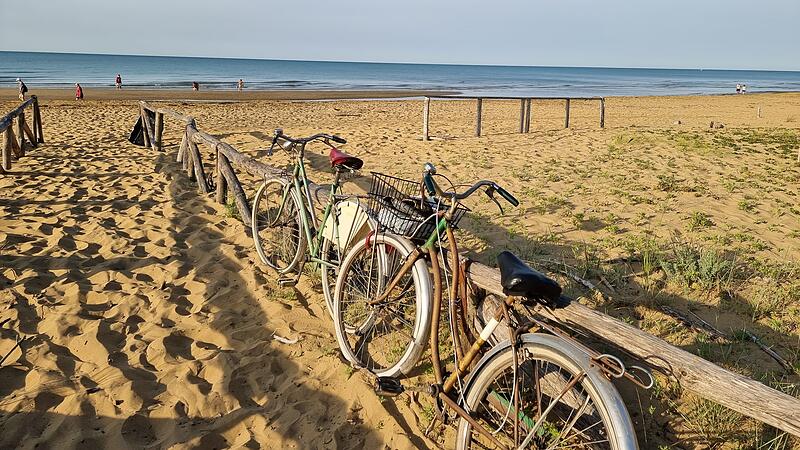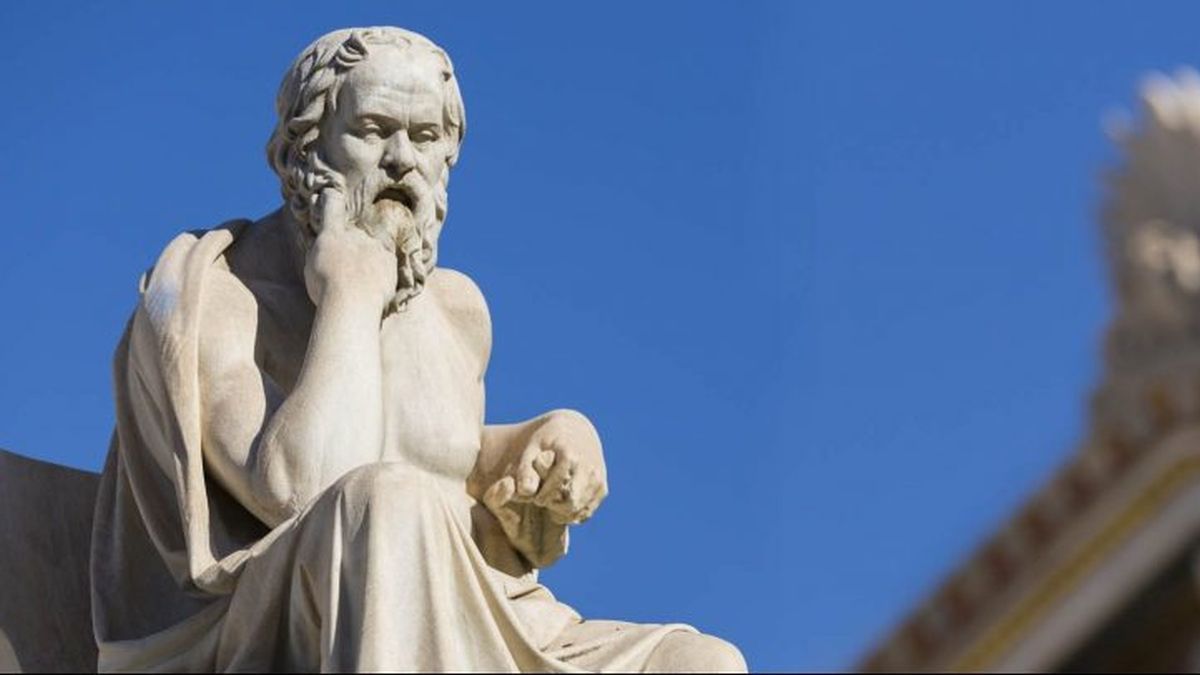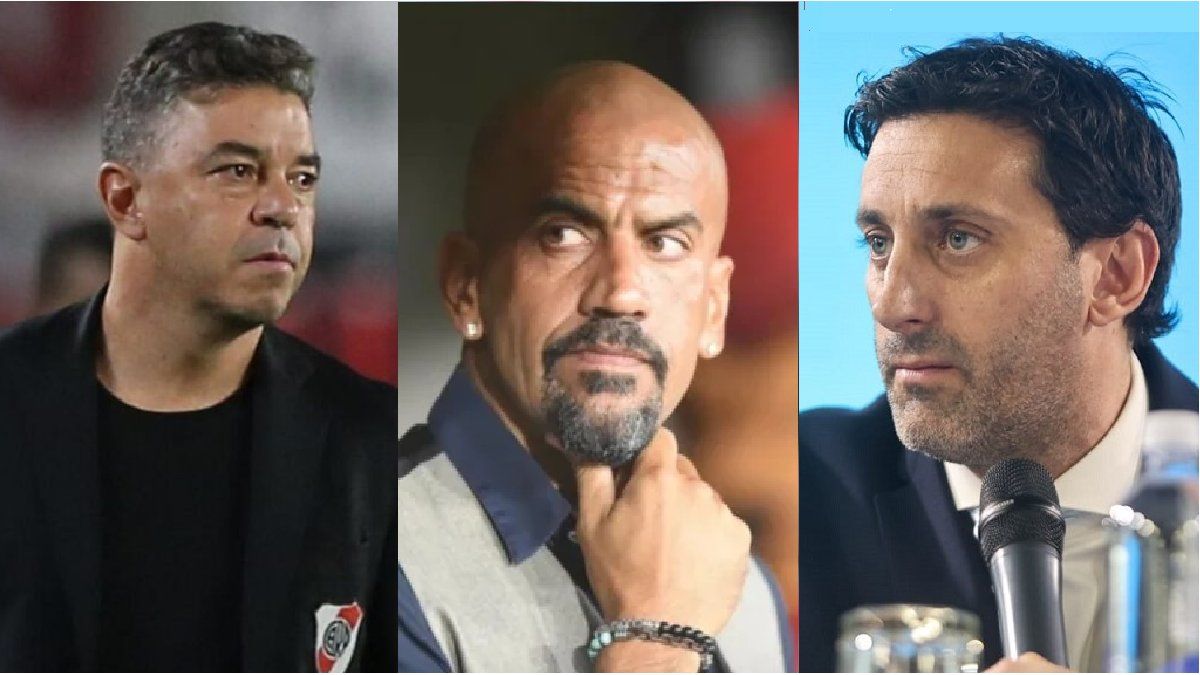“To the beach” – the arrow on the sign clearly indicates the direction in the glow of the cell phone flashlight. After seven hours in the office and five and a half hours in the car, the black air has already darkened the day. But despite the late hour you want to follow the smell of salt, at least wade briefly in the sea. Instead of the sound of the sea, cicadas that chirp as if there were no tomorrow and as if they had to compete against the quaccophony of the frogs, which, in terms of volume, emerged as the winners in this concert competition. The search for the beach is postponed, the night is too dark.
In the soft early morning light, the world on the eastern edge of Bibione looks different. Beach search, the second – it is already crowned with success after 400 meters. So this is it – the caretaker’s beach. A first. Row after row of parasols that don’t yet cast any shade, and even the loungers are left aside by the early risers. Actionism in the morning. Beachgoers leave their footprints in the sand, whether they’re wearing running shoes or holding shells and dog leashes.
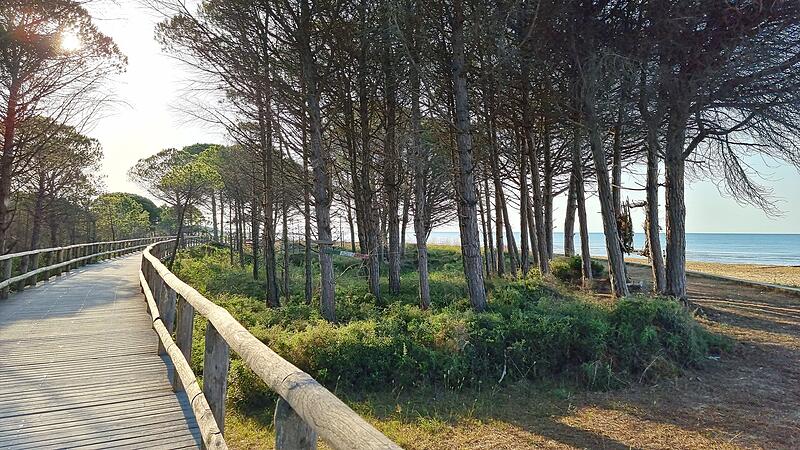

river meets sea
Right or left of the path? The choice between going towards Bibione and an endless series of hotel balconies or towards the Faro di Bibione, the lighthouse, is not really difficult. Where the dunes meet the pine forest, a man-made path leads through an ecosystem that is home to a wide variety of plants and animals. Signs ask you not to leave the paths and provide information, for example, about the plant “engineers of the dunes”, which have names such as beach bindweed, beach rocket, beach thistle and beach grass. The path ends at the lighthouse. Here, at the eastern end of Bibione, is the estuary of the Tagliamento. After 170 kilometers the “King of the Alpine rivers” reaches the sea, separating Bibione and Lignano, forming the border between Friuli and Veneto. Where sea and river water mix, there is a unique habitat for plants and animals that have become rare. Around 25 species of wild orchids bloom here, the Greek tortoise can be found and only here does the Stipa Veneta Moraldo, the real feather grass, grow.
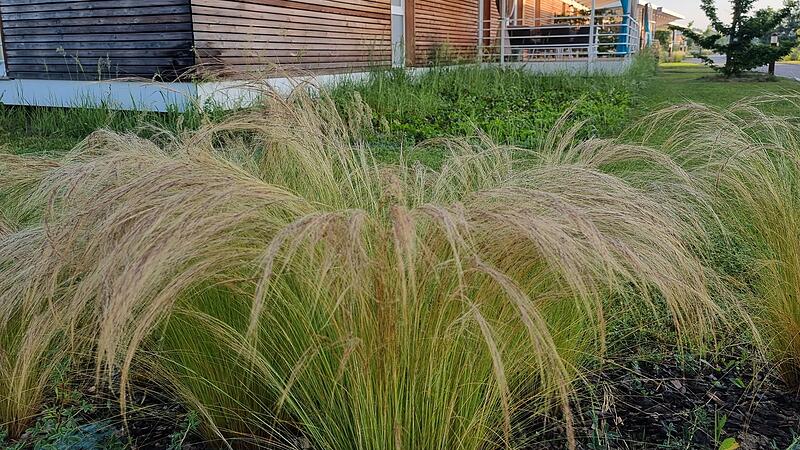

Totally Italian
The soft feather grass, on the other hand, is the namesake of the “Lino delle Fate”, adorns the lettering of the bungalow complex, which opened in 2019, and can be found everywhere on the 250,000 square meter site. It stands for a concept that focuses on nature and the natural – starting with the green band of perennials, hedges and grasses that meanders in front of, next to and between the bungalow units. The two-room (3-5 people) and three-room apartments (5-7 people) with terrace are made of larch wood. It may come from Austria, but the interior is just as “Made in Italy” as the feather grass and all the plants on the property are native to the area, irrigated by the way with collected rainwater. When in the evening a fine drizzle escapes from the metal pillars in front of the bungalows, then this is mixed with an essence from the pyrethrum plant, a natural remedy against mosquitoes.
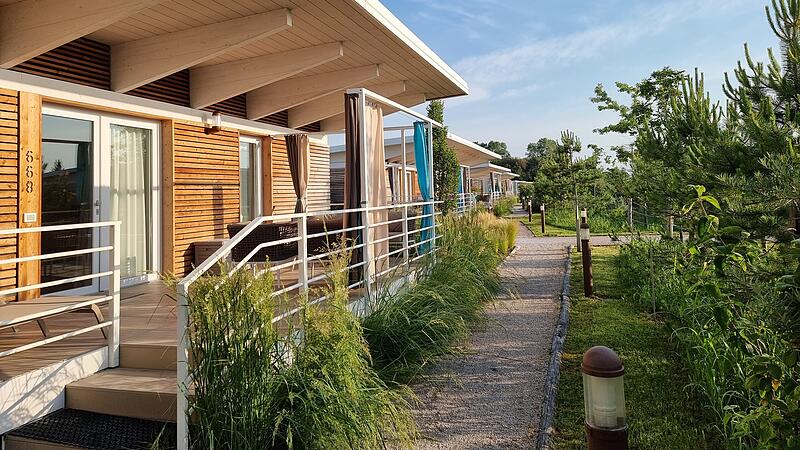

If you want even more nature, go to the adjacent 16,000 square meter biosphere park and keep an eye out for more than 40 native plant species and 50 bird species. Fresh air makes you hungry. You can cater for yourself or eat in the so-called clubhouse, a modern, elongated building that is visually appealing thanks to lots of wood on the inside and a façade made of mobile metal bars in a rusty design on the outside. The bread is homemade, the desserts come from the hotel’s own confectionery, and the products are home-grown and sourced from local producers. The breakfast and dinner times are quite tight at two and one and a half hours, which requires some patience at the buffet, also because main courses and starters are served. What makes the little ones particularly happy: there is pizza every day. Those who have had enough of the sea can swim in the large adults-only pool, while the little ones splash about in the 30 centimeter deep children’s pool. Both are heated with a geothermal system, which is why you can check in here from the beginning of April to the beginning of November and the facility is particularly popular with families with small children.


More than beach and sea
The center of Bibione is less than a ten-minute walk away, but a bike is still recommended. The rental is in the complex and there are almost as many cycle routes as there are sand by the sea. They lead along the beach and to the lighthouses, you can also cycle along the Tagliamento, take the ferry to Lignano in a few minutes for one euro or explore the Vallevecchia lagoon and take a look at the Casoni. If you want to approach these traditional fisherman’s huts made of wood and reeds from the water, book a boat tour. There is a lot to discover, and even if Bibione’s town center is not really attractive, the surroundings are. Those who already know Grado, Udine or Cividale can drive to Portogruaro, a 30-minute drive away, and will be amazed by its medieval old town with the leaning tower and the Venetian palazzi.
- Info: linodellefateresort.com
- price examples for the low season (September 17th to November 2nd): 5 nights in the Pino Nero bungalow for two adults 610 euros, 860 with HB; 5 nights in the Leccio bungalow for two adults and two children 840 euros, with half board 1230 euros
Source: Nachrichten

